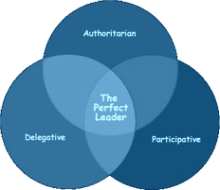Leadership in sports
I like to analyze, present and talk about leadership in sports, as it brings forward many aspects of relationships in life. Most of us are not aware that we in fact are a leader in sports, whether we are a coach, a judge, an administrator or…..a parent. Years ago, the most important basis to become a coach was the ability and knowledge to educate athletes about training methods, nutrition and competition. I belief that nowadays, this part is only the basics (some call it the fundamentals). The focus has become more and more on the mental side of training, and if you fail to become a good leader, and develop interpersonal relationships with athletes or your fellow board members, you will not reach your goals.
“Leadership, like swimming, cannot be learnt by reading about it” (Henry Mintzberg)
For some people leadership means to treat everybody around you one certain way.
Let’s start with analyzing different styles of leadership.
1. The Autocratic Leader
This is for me the “old-school” way of leadership. This type of leader tells (screams) his or her orders to the others and expects them to just follow. The leader makes all decision on his/her own, and is not at all concerned how others may perceive this style. Although this may work in some cases (like with very young athletes) there are lots of disadvantages. It is obvious that everyone and everything depends on the leader. People generally just dislike being around these kind of types, and there will definitely not be any long-term development of the team/project.
2. The Democratic Leader
Democratic leaders try to reach to decisions, after having consulted with the team members. They welcome feedback, and encourage others to take the initiative. This may seem in first instance as the best leadership style, but it is not in all cases. Disadvantages of the democratic leadership style are lengthy and boring discussions, trying to get everybody involved. Another danger is that opportunities which require quick and on the spot decisions will be missed easily, as everybody needs to be involved.
3. The delegative leader
This type is the “laid back” leader, who asks other people to analyze the situation and make their own decision. The leader doesn’t really ask for feedback, and delegates all responsibility to other people. The danger is that people will make wrong decisions. The leader will not correct these and the end result will be a chaos, due to a lack of direction and control from the leader.
It is obvious that none of these leadership styles are the perfect one. And some theories will advise you to use a combination of all three of them, to become the perfect leader……
…… WRONG !
“Leadership is the art of getting someone else to do something you want done, because he/she wants to do it (Eisenhower)
In my opinion, you should be aware of the different leadership styles. And then make a conscious decision of applying one or a combination of a couple of styles, depending on the situation.
An Example:
If you are presiding a meeting and your team should make a decision, you could start with the delegative style, asking your colleagues to reach to a decision. But if time goes by, and after 45 minutes, it is time to be more autocrative, and finally take a decision based on all that have been brought forward.
Are you a leader in sports management? If so, it would be nice if you would share your experience in the comment box below.




it is interesting to note how involvement in sports has been the starting place for many of our past & current political leaders…we have had Heads of States, Prime Minister’s, Ministers, Speaker of Parliaments, Member of Parliaments, Provincial Presidents & Councillors who have represented the country in sports nationally…